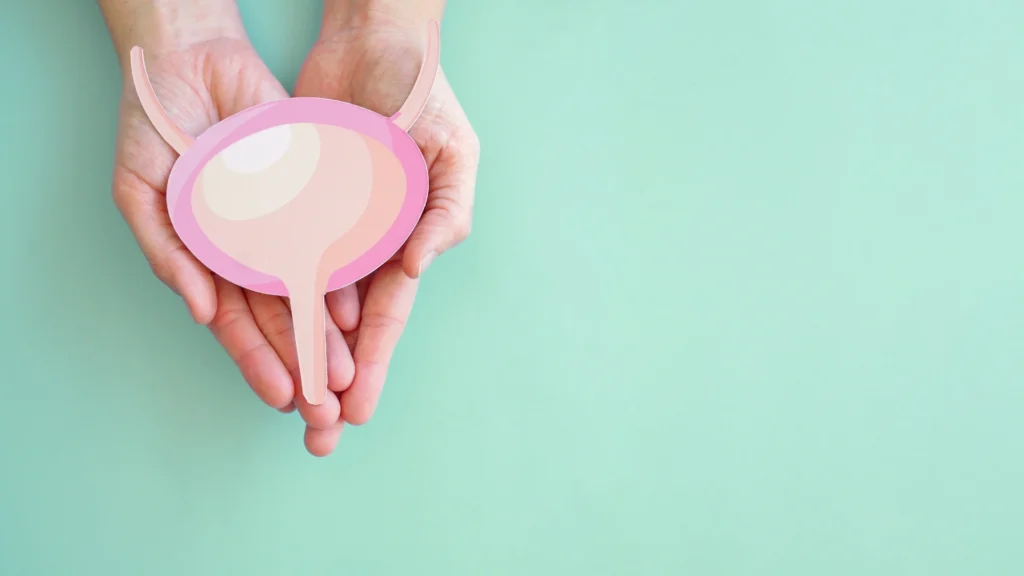Interstitial cystitis (IC) is a challenging condition that affects millions worldwide, causing chronic bladder pain and discomfort. For many sufferers, finding effective relief can be a frustrating journey. Among the various treatment options, antihistamines have emerged as a potential ally in managing IC symptoms. But which is the best antihistamine for interstitial cystitis?
This article explores antihistamines and their role in IC treatment, examining how these medications can help alleviate symptoms and improve quality of life. We’ll look at the most commonly prescribed options, their effectiveness and potential side effects, helping you make an informed decision in consultation with your healthcare provider.
📌 Key Takeaways:
| Antihistamine | Key Points | Dosage | Potential Benefits | Potential Side Effects |
|---|---|---|---|---|
| Hydroxyzine (Atarax, Vistaril) | Most widely used for IC/BPS | 10-25 mg at bedtime, gradually increasing to 50-75 mg daily | Reduces mast cell degranulation, may improve symptoms | Sedation, dry mouth, potential for increased depression |
| Cetirizine (Zyrtec) | Non-sedating alternative | 5-10 mg once daily | Less drowsiness, suitable for daytime use | Mild drowsiness, dry mouth, fatigue, headache |
| Loratadine (Claritin) | Another non-sedating option | 10 mg once daily | May help reduce bladder inflammation and pain | Generally well-tolerated, fewer side effects than first-generation antihistamines |
But first, What is Interstitial Cystitis?
Interstitial Cystitis (IC), also known as Painful Bladder Syndrome, is a chronic condition that causes pain and pressure in the bladder and pelvic area. Unlike typical bladder infections, IC is not caused by bacteria and doesn’t respond to antibiotics. Symptoms can vary widely among individuals but often include:
| Common Symptoms of Interstitial Cystitis |
|---|
| Frequent urination (up to 60 times a day) |
| Persistent pelvic pain |
| Pain during sexual intercourse |
| Feeling of urgency to urinate |
The exact cause of IC remains unknown, but researchers believe it may be linked to a defect in the protective lining of the bladder. This condition can significantly impact quality of life, affecting work, relationships and daily activities. Treatment often involves a combination of approaches, including dietary changes, physical therapy and medications.
Finding the best antihistamine for interstitial cystitis can be an important part of managing symptoms for many patients. While there’s no cure for IC, proper management can help reduce symptoms and improve overall well-being.
Why Antihistamines for Interstitial Cystitis?

Antihistamines have emerged as a potential treatment option for interstitial cystitis (IC) due to the growing understanding of the role histamine plays in this condition. Research has shown that people with IC often have elevated histamine levels and increased mast cell counts in their bladder tissues. Mast cells release histamine, which can trigger inflammation and pain in the bladder.
The use of antihistamines aims to address this underlying mechanism by:
| How Antihistamines Help in Interstitial Cystitis |
|---|
| Reducing histamine levels in the body |
| Blocking histamine receptors in the bladder |
| Potentially decreasing mast cell activation |
Antihistamines are also able to alleviate some IC symptoms, including frequent urination, bladder pain and discomfort, and urgency to urinate.
While the search for the best antihistamine for interstitial cystitis continues, several options have shown promise. Some antihistamines, like hydroxyzine, work by both reducing histamine production and blocking its effects. Others, such as cetirizine, primarily focus on blocking histamine receptors.
It’s important to note that the effectiveness of antihistamines can vary from person to person. Some patients report significant improvement in their symptoms, while others may experience limited benefits. As with any treatment for IC, finding the right antihistamine often involves a process of trial and error under the guidance of a healthcare professional.
How to choose the Best Antihistamine for Interstitial Cystitis?
When selecting the best antihistamine for interstitial cystitis, several factors should be considered:
Individual Patient Factors:
- Age and overall health
- Severity of IC symptoms
- Presence of other medical conditions
- Current medications and potential interactions
Sedating vs. Non-Sedating Options:
First-generation antihistamines like hydroxyzine can cause drowsiness, which may be beneficial for nighttime symptom relief but problematic during the day. Second-generation antihistamines like cetirizine or loratadine offer less sedation, making them more suitable for daytime use.
Effectiveness:
Some patients may respond better to certain antihistamines than others. It may take trial and error to find the most effective option.
Side Effects:
Consider potential side effects and how they might impact your daily life. Common side effects include dry mouth, constipation and dizziness.
Dosage Schedule:
Some antihistamines are taken once daily, while others require multiple doses. Consider which schedule best fits your lifestyle.
Consultation with Healthcare Provider:
Always discuss with your doctor before starting or changing antihistamine treatment. They can provide personalised advice based on your medical history and current condition.
By carefully considering these factors, you can work with your healthcare provider to find the most suitable antihistamine for managing your interstitial cystitis symptoms.
The Best Antihistamine for Interstitial Cystitis
Hydroxyzine (Atarax, Vistaril)
Hydroxyzine, available under the brand names Atarax and Vistaril, is often considered one of the best antihistamine for interstitial cystitis. This medication works by affecting mast cell degranulation, which is thought to play a role in IC symptoms.
Dosage and Administration:
Most patients start with a 10 to 25 mg dose at bedtime, gradually increasing to 50-75 mg daily over a month. Some may take 50 mg at night and 25 mg during the day. Benefits may be seen within a few weeks to two months after starting therapy.
Potential Side Effects:
Common side effects include:
- Drowsiness
- Dry mouth
- Constipation
- Confusion (especially in older adults)
- Dizziness
- Headache
More serious side effects, though rare, can include:
- Unintentional trembling or shaking
- Seizures
- Severe skin reactions
It’s important to take hydroxyzine early in the evening initially to avoid excessive morning drowsiness. Most patients report that daytime drowsiness diminishes within a few days of starting treatment.
💡 Take Note: Always consult with your healthcare provider before starting or changing any medication regimen for interstitial cystitis.
Cetirizine (Zyrtec)

Cetirizine (Zyrtec) is often considered one of the best antihistamine for interstitial cystitis, especially for those who can’t tolerate sedating options. This second-generation antihistamine offers relief from allergy symptoms with less drowsiness compared to older alternatives.
Dosage and Administration:
For adults and children 6 years and older, the typical dose is 10 mg once daily. Some may find relief with a lower 5 mg dose. It’s important to follow the recommended dosage and not exceed 10 mg in 24 hours.
Benefits:
Cetirizine provides effective relief from allergy symptoms and may help manage interstitial cystitis symptoms. Its non-sedating properties make it suitable for daytime use without significantly impacting alertness or daily activities.
Potential Side Effects:
Common side effects include:
- Mild drowsiness
- Dry mouth
- Fatigue
- Headache
- Dizziness
While generally well-tolerated, some individuals may experience more pronounced drowsiness, especially when first starting the medication.
💡 Take Note: Always consult with your healthcare provider before starting cetirizine for interstitial cystitis to ensure it’s appropriate for your specific situation.
Other Antihistamines (e.g., loratadine)
While hydroxyzine and cetirizine are often considered the best antihistamine for interstitial cystitis, other options like loratadine may also provide benefits for some patients. Loratadine, known by the brand name Claritin, is a second-generation antihistamine that offers non-sedating relief from allergy symptoms.
Potential Benefits:
Loratadine may help reduce bladder inflammation and pain associated with interstitial cystitis. Its non-sedating properties make it suitable for daytime use without significantly impacting alertness or daily activities.
Comparison to Hydroxyzine and Cetirizine:
- Less sedating than hydroxyzine
- Similar non-sedating properties to cetirizine
- May be less effective for some IC patients compared to hydroxyzine
- Potentially fewer side effects than first-generation antihistamines
Dosage:
The typical dose for adults is 10 mg once daily.
While not as widely studied for interstitial cystitis as hydroxyzine or cetirizine, loratadine may be a viable alternative for those who cannot tolerate other antihistamines.
💡 Take Note: As with any medication, it’s crucial to consult with a healthcare provider to determine if loratadine is appropriate for your specific situation.
Combining Antihistamines with Other Treatments
Treating interstitial cystitis often involves a multi-faceted approach, and combining antihistamines with other treatments can enhance overall symptom relief. While finding the best antihistamine for interstitial cystitis is important, it’s equally crucial to consider how it fits into a comprehensive treatment plan.
Multimodal Therapy:
Many healthcare providers recommend a combination of treatments to address different aspects of IC. This approach may include:
- Antihistamines for reducing inflammation and pain
- Pentosan polysulfate sodium (Elmiron) to help repair the bladder lining
- Tricyclic antidepressants like amitriptyline for pain management
- Dietary modifications to avoid trigger foods
- Pelvic floor physical therapy to relax tense muscles
- Stress reduction techniques
Potential Combinations:
| Combination Therapy | Potential Benefits |
|---|---|
| Antihistamines + Pentosan polysulfate | More comprehensive relief by addressing both inflammation and bladder lining issues |
| Antihistamines + Amitriptyline | Improved pain relief for some patients |
It’s essential to work closely with your healthcare provider when combining treatments. They can help monitor for potential interactions and adjust dosages as needed. The goal is to find the right balance of treatments that provides the most relief with the least side effects.
Take note that what works best can vary from person to person. Be patient and open to trying different combinations under medical supervision to find the most effective treatment plan for your specific case of interstitial cystitis.
Take Control of Your IC Symptoms Today

Finding the best antihistamine for interstitial cystitis can significantly improve your quality of life. While hydroxyzine, cetirizine and loratadine each offer unique benefits, the most effective choice varies from person to person. Consider your specific symptoms, lifestyle and any other medical conditions when selecting an antihistamine.
Don’t hesitate to discuss these options with your healthcare provider. They can help you create a tailored treatment plan that may include combining antihistamines with other therapies for comprehensive relief.
Take note that managing IC is a journey, and it may take time to find the right combination of treatments. Stay patient, stay informed and take an active role in your care.
With the right approach, you can effectively manage your IC symptoms and regain control of your life.
Read this next: Best Antihistamine Eye Drops Tested for 2024



